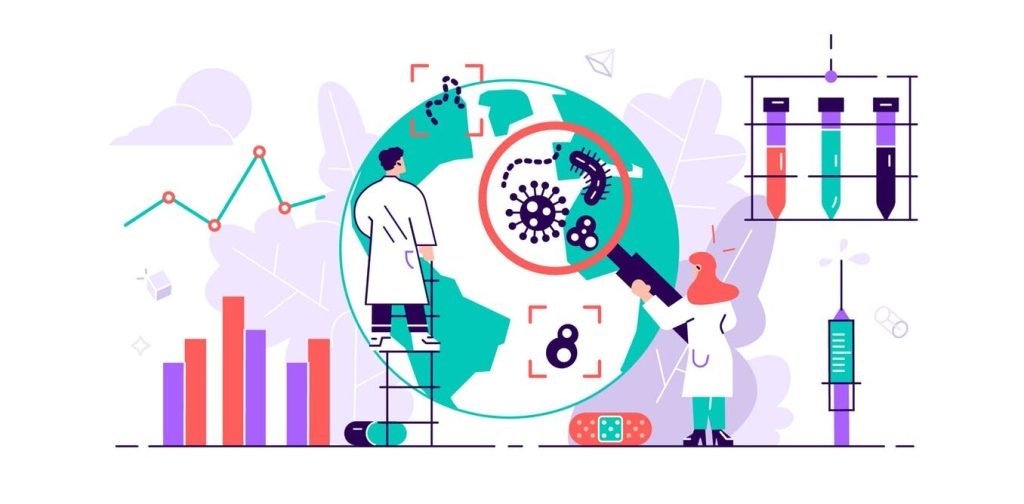‘Policy clusters’ are a portrayal of the leadership demeanour while taking advantage of the demographic and social characteristics of the population. Rapid deployment within the first two weeks of index case notification results in rapid identification of the infected, their contacts and a combination of quarantine and isolation will result in slowing down the epidemic. These actions require political commitment and resolute use of experts in epidemic management i.e political cluster.
In our African story, we see a few countries that took this approach. On the face of it, these countries would appear like they have the biggest burden, but they are more likely to manage the epidemic better. They cut transmission significantly and avoid infections among the vulnerable populations especially if they sustain the strategy; aggressive identification of the infected, isolation, contact tracing, quarantine, and testing. Through this aggression, their graphs will rise suddenly, with a potential to slow down later or flatten earlier. Countries in this category include Mauritius, Mali, Madagascar, South Africa, Rwanda, Uganda, Burkina-Faso and Ghana. Within the first ten days after index case notification, the number of cases in this cluster ranged from 27 in Ghana to 94 in Mauritius and by the 15th day (two weeks, their numbers ranged from 48 in Uganda to 161 in Mauritius. By the 15th day, Ghana, Burkina Faso and South Africa had reported 141 cases, 114 cases, 150 cases and 161 cases respectively.
The second cluster of countries delay in testing and identifying cases within the first two weeks after index case notification. They initially paint a calming picture of ‘no cases’ or very few cases, albeit with a swelling and potentially explosive underbelly but when they accelerate testing and other containment measures, cases start rising. Depending on their implementation speed these countries may either remain in their cluster or tend towards the first cluster. This cluster of countries had between 12 and 25 cases by the 10th day and barely 30 cases by the end of two weeks. The swelling underbelly in this cluster can produce a late exponential rise in cases and easily overwhelm the health system. However, this cluster had a window of opportunity to change the course of the epidemic within the next 10 days or so after the expiry of the first two weeks-(decisive period). Countries like Kenya, Djibouti, DRC, Niger, Tunisia, Algeria, Tanzania and Guinea Bissau fall in this category. A close look at these countries reveals exponential rises is Niger, Algeria, Tunisia and Djibouti by the 30th day.
The last ‘policy cluster’ is what I’d call late responders. In my view, this is a dangerous cluster; one that shows a deceptively calm epidemic but hiding a real volcano below as the countries go into an unearned epidemic honeymoon. An extended delay in identification, notification, contact tracing, and management is an ominous sign because during the unearned honeymoon community transmission happens stealthily but precisely. Best examples of countries in this cluster are Egypt and Nigeria.
Despite the fact that they were among the first African countries to register a COVID-19 case, their delayed inaction continued to paint a deceptive picture of fewer than two cases in the first two weeks and less than ten cases on the 20th day. Egypt seemed to ‘wake up’ on the 38th day and thereafter the trajectory suddenly changed from a ‘non-increasing’ slope of their epidemic curve to the classical exponential curve and within three weeks, Egypt ranked among countries with the highest caseloads in Africa. Nigeria’s epidemic ‘wakeup’ call seems to have been delayed until the 50th day since the index case notification. At this point, Nigeria had reported 493 cases. To the naked eye, this may have passed as a well-contained epidemic but events in the following 12 days (up to 29th of April) reveal the volcano underneath. Nigeria’s cases rise by more than 350% from 493 to 1,728. Such is the African story told in low tones, but we must get megaphones and amplify the voice. The ‘epidemic decibels’ of the African COVID-19 story need to increase. Africa should not allow volcanoes to continue boiling underneath.
Through analysis of accumulating data, it is possible to decipher the described clustering and derive information that can challenge the status quo. Since the epidemic is evolving, the proposal is to look at the data intermittently, but as frequently as possible and spur discussions. While telling the African Story, the narrative would be incomplete without questioning the veracity of the data. The health information systems (HIS) is a critical component of the health systems all over the world. The strength of the African HIS is as good as the political and economic systems in the individual African countries. It is common knowledge that data is central to decision-making in health, and indeed, any other sector in the economy. The accuracy and quality of data in Africa may be wanting, owing to the poor health infrastructure and overall health system factors. We must, therefore, re-examine our health information systems as well as surveillance systems if we were to tell a cogent African story. As we endeavour to write the African story, we can pick cues from the continents where the pandemic hit first. We have the ‘advantage of second-born children’. We can learn from the experiences, mistakes, misdeeds, and opportunities of the first-born children (the countries where the epidemic hit first) but we should definitely adopt solutions that are realistic and applicable in our context.



